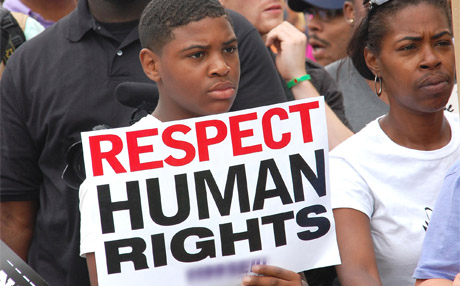
Thomas Altfather Good / CC BY-SA 2.5




GRADE LEVEL: High School
COMMON CORE STANDARDS: Reading, Speaking and Listening
On August 9, 2014, Michael Brown, an 18-year-old Black teenager, was allegedly shot multiple times and killed by a white police officer in Ferguson, Missouri, a suburb of St. Louis. Following the shooting, hundreds of people gathered at the scene of the shooting to organize vigils to remember Michael Brown as well as protest to demand answers as to why he was shot. Over the course of the next several days, these protests, the majority of which were peaceful, were reportedly met with a heavily armed police department. The story captured the attention of the nation and the media.
The Michael Brown incident and numerous others since then have been widely publicized due to increased video recording and social media, causing a global outcry of injustice. These incidents have struck a chord with many people who perceive the situation as emblematic of a trend in which a disproportionate number of Black men and women are being killed by police officers and a general feeling that White and Black people’s perceptions of and relationships with the police are very different.
According to the Sentencing Project's 2018 report, Black people are more likely than white people to be arrested. Once arrested, they are more likely to be convicted; and once convicted, they are more likely to experience lengthy prison sentences.
This lesson provides an opportunity for students to analyze race, privilege and power using the killing of Michael Brown as an example of this situation. Students will learn about unearned privilege, examine the various levels of racial disparities in the criminal justice system and explore the role white privilege plays in the different interactions whites and people of color have with community service providers, such as law enforcement.
(This is an advanced lesson.)
Learning Objectives: